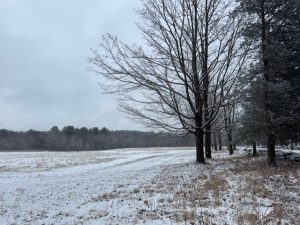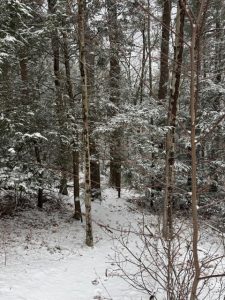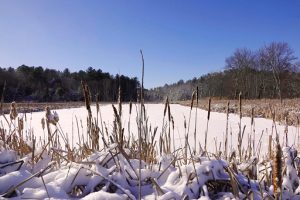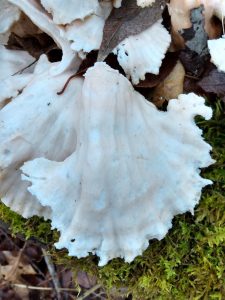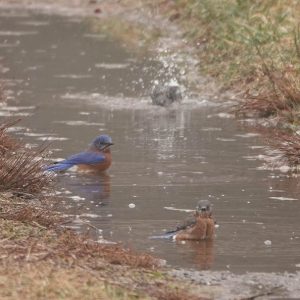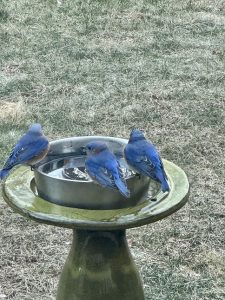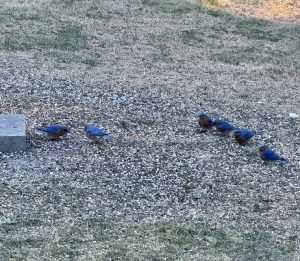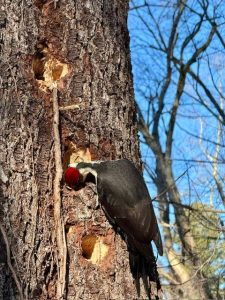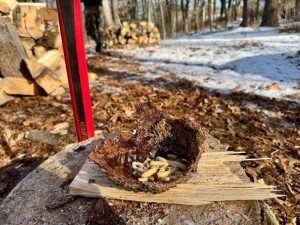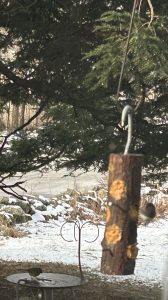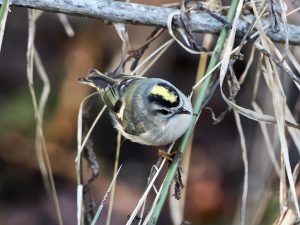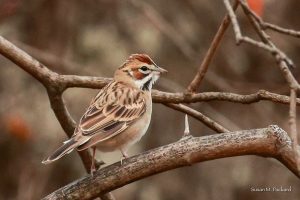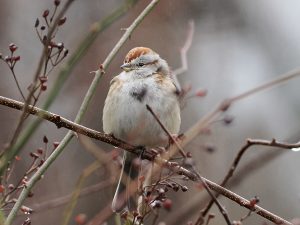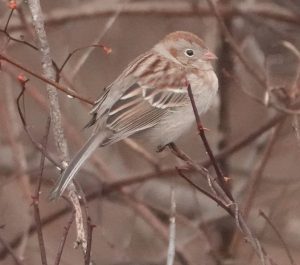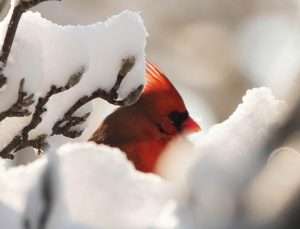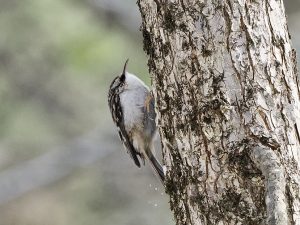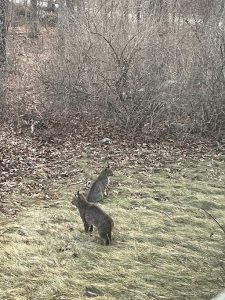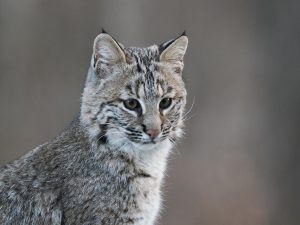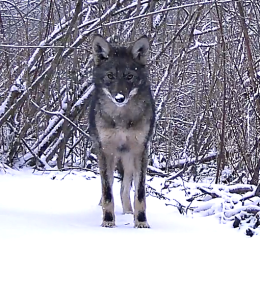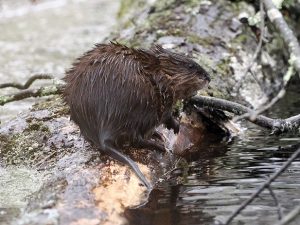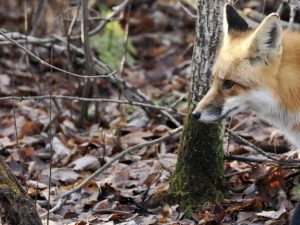Written by Gwyn Loud for the Lincoln Land Conservation Trust. She welcomes your sightings and questions at 781-259-8690 or gwynloud555@gmail.com
The last month has given us a lot of bitter cold and wind, with a few welcome sunny days above freezing. Ponds are frozen, making ice skaters happy, but driving birds such as kingfishers and wintering ducks farther south. Less than two inches of snow fell on January 11, barely enough to plow, but bringing sparkling white beauty to the landscape. Then on January 19 the first major snowstorm of the season blanketed Lincoln with about five inches of beautiful powder. Time will tell if if this is the first and/or last significant snow of the season. As reported in an article in the Boston Globe in 2023, “Since 2000, the number of days with snow cover globally has declined as Earth’s climate warms, and southern New England has lost nearly a month of its annual snow cover — among the steepest losses globally, according to a new study which was published in the journal Climate.”
We are now a month past the winter solstice and the hours of daylight are noticeably increasing, with sunset occurring later each day. Birds respond to the increased daylight by starting to sing some breeding songs, even as early as January. I heard my first “fee bee” call of the chickadee on January 17, and the house finches are twittering enthusiastically. Great horned owls are hooting, as this is their courtship season; they nest very early and may be sitting on eggs in February. Rather than build their own nest, great horned owls tend to fix up an old nest left by a bird such as a red-tailed hawk high in a woodland tree, often a white pine.
This was a big mast year and thousands of acorns can still be found on the ground, benefitting many birds and mammals which eat them. Other berries, seeds, and insects (often hidden under bark) continue to be winter food for wildlife. Flocks of robins have picked my holly berries clean, and I caught a bluebird in the act of eating the berries from my holiday wreath; other residents have reported similar wreaths-turned- snack bars. A neighbor, cutting and splitting logs from a white pine which had just been cut down, noticed a male pileated woodpecker nearby, which turned out to be hungrily curious about the white grubs which were revealed in the split logs. These were the larvae of carpenter ants. My neighbors scooped up some of the larvae and set them out on a stump for the woodpecker to eat and also put some in holes in a nearby tree in which the pileated had already been making holes. He gobbled them up!
During the recent bitter cold (with more to come), birds have been mobbing feeders and my peanut butter log has been especially popular. An enterprising junco, normally a ground feeder, has even learned to hop on the hanging log. Cooper’s hawks have found meals near feeders too, often a plump mourning dove. It is hard to watch, but hawks also have to eat. We are learning more about how devastating rodenticides are to hawks and owls, as the poison moves up the food chain.
Notable birds seen recently include two marsh wrens lingering in the marsh behind St. Anne’s, winter wrens, tree sparrows, both golden-crowned and ruby-crowned kinglets, a small number of purple finches and a few over-wintering hermit thrushes, pine warblers, field and swamp sparrows, and yellow-bellied sapsuckers. Observers at Drumlin Farm found an Eastern phoebe, a snow bunting, and a northern harrier. Norman Levey, who coordinates the annual Christmas Bird Count describes many more avian sightings in his report, as follows:
“The 65th Concord Christmas Bird Count, encircling parts or the whole of eighteen towns, started in the early hours of December 29 in the wake of a deep freeze with mild temperatures, sporadic showers, dense fog, and a supernatural quiet. Overflying birds were obscured and may have passed over in silence; owls were quiet in the morning. Ducks were confined to open leads in the rivers and Flint’s Pond was totally iced over.There was none of the drama of last year’s count that showed thousands of lingering blackbirds and robins and thirteen high count records. The upshot this year is a final tally circle-wide of almost precisely half last year’s astonishing 65,463 birds that left this observer with a feeling that this was truly a “normal” mid-winter bird count.Notable ups and downs included wild turkey that joined the count in 1997 and overtopped last year’s record 382 by 44. Ruffed grouse and ring-necked pheasant, once common, met extinction on the CBC many years ago. Other record highs: brown creeper (97) and Carolina wren by a big margin of 682 over last year’s 461. This is a notable recovery since a severe winter a decade ago killed off all but 90. This big bossy wren was once a rarity, appearing in single digits the first thirty years we counted them.Gulls, red-tailed hawks, bald eagles, turkey vultures and other flybys and soaring birds were lost in the thick fog and passed over unseen or roosted for the day. Counts for these were below the averages. Cedar waxwings, once reliably tallied in the hundreds left our circle for more promising foraging opportunities, leaving thirteen behind, seven of those in Lincoln. Fall’s abundant crop of juniper berries and rose hips, waxwing favorites, had become Winter’s spare, desiccated leftovers.Lincoln has one record this year: possibly its first Virginia rail on count day. A few of these hardy rails will overwinter in unfrozen spots in our cattail and phragmites marshes. Another Lincoln distinction is a lark sparrow, native to Central and Western U.S., that lost its compass and migrated to Mass Audubon’s Drumlin Farm Sanctuary, posing for legions of birders and photographers for well over a month and showed up at our countdown and potluck event a week after the big day to soak up more celebrity.Many thanks to our hardy field team members and feeder watchers counting from their kitchen windows hearth sides for another successful winter bird count.”
The participants in our Lincoln count this year were Pam Boardman, Jenifer and Dennis Burckett-Picker, Mathias Bitter, Larry and Kim Buell, Patti Cable, Mary Capkanis, Rob DeNormandie, Marjorie Durand and Greg Stathis, Jason Forbes, Deborah Gerstein, Sam Harris, Norman Levey, Gwyn Loud, Ron McAdow, Jane Moss, Lucy Sprayregen, Betsy Stokey, Barbara Peskin, David and Zach Peterson, Jocelyn Pyne, Anne Sobol, Lucy Sprayregen, Betsy Stokey, Anne Sobol, Pam Sowizral, and Robin Wilkerson.
Those who like watching birds at their feeders may want to participate in the annual Great Backyard Bird Count from Feb. 14-17, 2025. This is a global birding citizen science event and details can be found in the link below.
Most of our common mammals are active all winter. Carol Roede has captured mammals such as muskrats and bobcats (4 again!) on her trail cam, and video clips of otters reveal them making different sounds. Coyotes and red foxes are often seen; If you have ever wondered how red foxes, for example, survive in the cold, Mary Holland explains it well:
“Red Foxes adapt to winter and preserve heat in numerous ways. Physical adaptations include a thicker coat with a dense undercoat trapping warm air close to their skin. Longer guard hairs repel water and snow, keeping the coat relatively dry. Furrier ears and feet are better protected, and a fluffier tail provides excellent protection from the elements when wrapped around the curled-up body of a sleeping fox. These physical adaptations allow Red Foxes to sleep in the open on the ground most of the winter, but if the temperature goes down into single digits, added protection is sought in dens vacated by last year’s litter. (Mating occurs in January and February, so dens are vacant for another few months until young foxes are born).”
An observer reported hearing what sounded like a spring peeper on December 30, which happened to be a balmy 57 ℉. Research has shown that single spring peepers, little tree frogs, have been heard peeping in every month of the year, not just in the spring, when we hear them chorusing. Wood frogs, spring peepers and gray tree frogs, are all able to be frozen and still survive without going below the frostline. Freezing temperatures trigger production of glucose between their cells, like anti-freeze. Other amphibians, such as bull frogs, and green frogs, head down into the muddy bottom of ponds for the winter.
If you would like a harbinger of the season to come, I recommend bringing some twigs of forsythia into the warmth of your house by the end of January, and your reward will be cheerful yellow flowers.
Links


